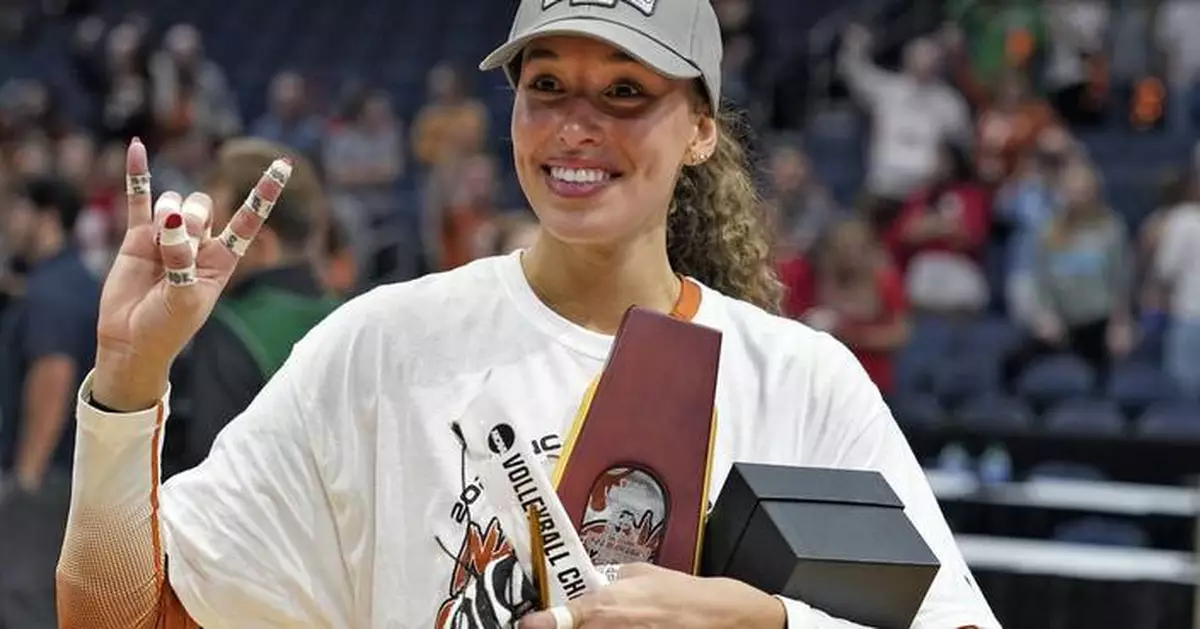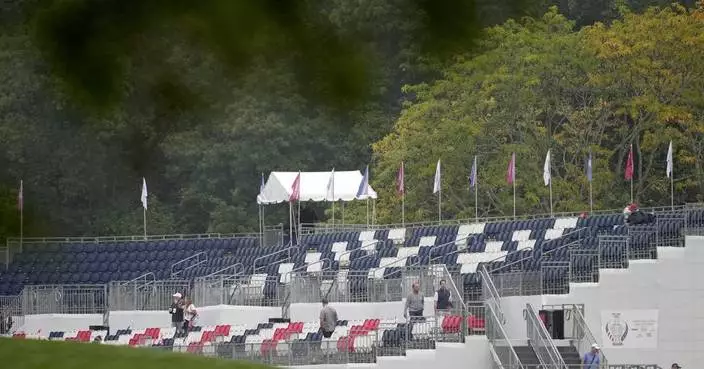Perhaps no sport will be impacted more by the most recent round of conference realignment than women’s volleyball.
Five of the last nine schools to win national championships switched conferences during the offseason. Those five schools (Texas, Stanford, UCLA, Washington and Southern California) have combined to claim 12 of the last 23 titles.
All that movement has resulted in a different kind of offseason as teams eye new conference rivals.
“You need to study film a little bit more, because when you get in your conferences, you kind of have a general idea of how they operate,” said Texas coach Jerritt Elliott, whose two-time defending national champions moved from the Big 12 to the Southeastern Conference. “So you’re just kind of learning the nuances of what they’re bringing.”
The season starts Tuesday with Nebraska facing Kentucky and Wisconsin playing Louisville in the American Volleyball Coaches Association First Serve Showcase at Louisville, Kentucky. Nebraska is ranked second, Wisconsin third, Louisville sixth and Kentucky ninth in the AVCA preseason poll.
This latest wave of realignment comes at a time when women’s college volleyball is exploding in popularity. The top three attendances for a match were all set last season (92,003 for Nebraska’s regular-season win over Omaha at Memorial Stadium, 19,727 for Texas’ NCAA championship game triumph over Nebraska and 19,598 for the NCAA semifinals). The NCAA final drew a record 1.7 million television viewers.
Texas’ move gives the SEC three of the last four national champions, as Kentucky won the crown in the 2020 season that was delayed until the spring of 2021 due to the pandemic. The Atlantic Coast Conference added nine-time national champion Stanford along with California and SMU.
But the biggest change comes in the Big Ten, which already considered itself the nation’s toughest volleyball conference even before it added USC, UCLA, Oregon and Washington.
The Big Ten has seven teams in the AVCA's preseason poll, including five in the top 10: Nebraska, Wisconsin, No. 7 Penn State, No. 8 Purdue and No. 10 Oregon. The other ranked Big Ten teams are No. 18 Minnesota and No. 21 USC.
Wisconsin won the national title in 2021 and has made four Final Four appearances the last five years. Nebraska has been a runner-up three times since winning its fifth national championship in 2017. Penn State is a seven-time national champion.
“Putting a lot of power schools into the same conference, I think it’s going to be even more of a bloodbath to get in the tournament,” Wisconsin outside hitter Sarah Franklin said.
It’s also going to require some adjustment for the West Coast teams as they adapt to the Big Ten.
“I think Pac-12 schools have a little bit of a different style as far as like defense, scrappiness and quickness,” Oregon defensive specialist Daley McClellan said. “I feel like the Big Ten, it’s just big girls, big blocks, aggressive swings, aggressive defense. I think everything is just a lot more physical.”
USC coach Brad Keller says he’s already adjusting his recruiting accordingly.
“I’ve always been someone who has been going after a lot of maybe some smaller players that are really quick-twitch fast, explosive,” Keller said. “Now I’ve mixed and blended it with more physical, bigger volleyball players as well.”
Other conferences also will have a new look. For instance, Pitt and Stanford may be 2,600 miles from each other, but now they’re ACC rivals. Pitt is seeking its fourth straight Final Four appearance.
“I think there’s probably six teams that have a really good chance of a national championship,” Pitt coach Dan Fisher said. “I’d say we’re in that. And then maybe another five or six that have an outside chance.”
It all starts with Texas, which is aiming to become the first team to earn three straight national championships since Penn State won four straight from 2007-10.
“This might be the deepest team we’ve ever had,” Elliott said.
The Longhorns got 46 of the 61 first-place votes in the AVCA poll. Madisen Skinner returns after being named the most outstanding player of last year’s Final Four. Skinner, who began her college career at Kentucky, has a chance to become part of a fourth national championship team. She’s joined this year by former Kentucky teammate Reagan Rutherford. Other preseason all-SEC selections for Texas include Emma Halter and Ella Swindle.
Nebraska received the other 15 first-place votes. The Cornhuskers return every starter from a team that won its first 27 matches and finished second in the NCAA Tournament last year. That list of returners includes 2023 AVCA All-America selections Merritt Beason (first team), Lexi Rodriguez (first team), Bergen Reilly (second team) and Harper Murray (third team).
Franklin, the AVCA national player of the year last season, heads a list of eight returners from a team that went 30-4 and lost to Texas in the national semifinals last year. Wisconsin brings back three 2023 AVCA All-Americans: Franklin (first team), Anna Smrek (second team) and Carter Booth (third team).
Pitt brings back five starters after going 29-5 and falling to Nebraska in last year’s semifinals. Olivia Babcock was a first-team AVCA All-America selection and the AVCA’s freshman of the year last season. Other returning 2023 All-Americans for Pitt include Rachel Fairbanks (first team) and Torrey Stafford (third team).
Stanford adjusts to a new conference after winning 12 of the last 18 Pac-12 titles. The Cardinal went 29-4 and lost to Texas in a regional final last year. Kami Miner, a two-time Pac-12 setter of the year, was an AVCA first-team All-American last season. Elia Rubin made the second team.

FILE - Texas's Madisen Skinner celebrates after the team defeated Nebraska during the championship match in the NCAA Division I women's college volleyball tournament, Dec. 17, 2023, in Tampa, Fla. (AP Photo/Chris O'Meara)










